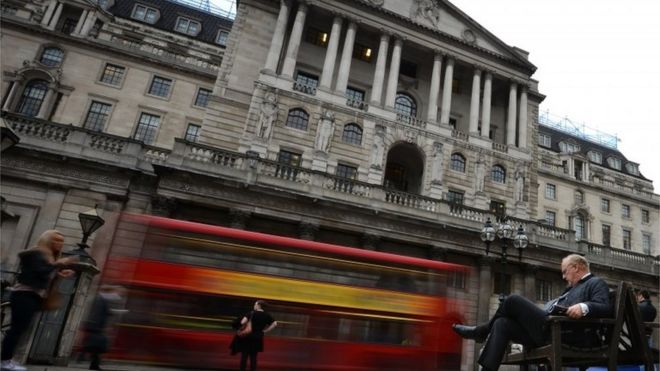
The Bank of England has published its latest "Purple Book", which sets out how banks should prepare for a crisis.
The book pulls together its thinking on regulation, including what sums banks must set aside and in what form it must be structured.
Its aim is to protect taxpayers from the cost of a big bank collapse.
It is 10 years since the start of the credit crunch which saw governments spend billions propping up major banks, including the UK's Lloyds and RBS.
New rules are set to come into place in 2022.
They are designed to make sure that even the biggest banks - those deemed "too big to fail" - can be dealt with without taxpayers having to bear the brunt of protecting the rest of the system.
Shortfall
The new Minimum Requirements for Own Funds and Eligible Requirements (MREL), mean giant foreign banks, such as JP Morgan and Deutsche Bank, must create special internal debt that would mean creditors being "bailed in" rather than governments needing to bail them out.
A bail-in means creditors of a bank will bear some of the burden by having part of the debt they are owed written off, as happened to those who had leant to Greece.
The UK's own banks have a shortfall of the amount they need to have put by of £116bn, the Bank said. They have until 2022 to raise these funds.
The Bank said it would start publishing details of how far along the banks were in their efforts, starting in 2019.
Sir Jon Cunliffe, deputy governor for financial stability at the Bank, said: "It is 10 years since the financial crisis began. Like many countries at that time, the UK did not have a regime for dealing with banks which failed.
"Faced with potentially disastrous consequences governments, the UK's included, felt they had no choice but to bail the banks out. Resolution aims to change this. It ensures banks can be allowed to fail in an orderly way. Just like when any other business fails, losses arising from bank failure would be imposed on shareholders and investors."
The Purple Book, which updates a process begun by the Bank in 2014 includes an infographic, which lays out in clear pictures how banking protection would kick in if a crisis occurred
No comments:
Post a Comment